-

Jun
30
Senate Ag Committee Passes the Cattle Price Discovery and Transparency Act
.png?sfvrsn=829f52d1_0)
The United States Senate Agricultural Committee has passed the Cattle Price Discovery and Transparency Act (S. 4030), a bill that would establish pricing mechanisms for live animal purchases.
Read more
-

Jun
30
Study finds plant-based protein not as nutritious as real meat
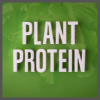
A new study by researchers at Ohio State University found that human cells currently do not absorb the same level of nutrients from plant-based protein as they do from meat from animals. While plant-based proteins have risen in popularity, this study shines a light on how the body reacts differently when compared to meat.
Read more
-

Jun
30
Call for nominations for the 2025 Dietary Guidelines Advisory Committee

The United States Department of Agriculture (USDA) and The United States Department of Health and Human Services (HHS) are calling for nominations for the 2025-2030 Dietary Guidelines Advisory Committee (DGAC). ASAS President-Elect Teresa Davis was a 2020-2025 member of the DGAC.
Read more
-

Jun
30
USDA unveils the Food System Transformation framework

The United States Department of Agriculture (USDA) has announced the details of the Food System Transformation framework. The framework was designed to transform the food system to benefit consumers, producers, and rural communities by providing more options, increasing access, and creating markets for small and mid-size producers.
Read more
-

Jun
30
Supreme Court filings for California’s Proposition 12 underway

The National Pork Producer’s Council (NPPC) and the American Farm Bureau Federation (AFBF) recently filed the initial brief with the United States Supreme Court in the case against California’s Proposition 12 (Prop 12). The Proposition bans the sale of pork not produced according to the state’s production standards.
Read more
-

Jun
30
Operation Fly Formula created to help US families

Aimed to target the infant formula shortage, President Joe Biden has announced Operation Fly Formula. Under Operation Fly Formula, the United States Department of Agriculture (USDA) and the Department of Health and Human Services (HHS) are authorized to use Department of Defense (DOD)-contracted commercial aircraft to pick up overseas infant formula that meets U.S. health and safety standards, so it can get to store shelves faster.
Read more
-

Jun
30
New report finds the demand for meat outweighs meat avoidance
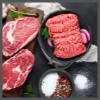
Researchers from Kansas State University and Purdue University have released the report Meat demand outdoes meat avoidance. The report found that even with the increase in plant-based fake meat products, Americans are still consuming meat.
Read more
-

Jun
30
Kansas’ fake meat law to go into effect July 1st
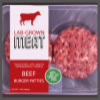
A new law has been signed by the Governor of the state of Kansas to require producers of fake meat products that use meat terms to include a disclaimer indicating the product does not contain meat on the label in prominent and conspicuous font size in close proximity to the meat term.
Read more
-

Jun
30
Chavonda Jacobs Young confirmed as USDA REE Undersecretary

Earlier this month, the United States Senate confirmed Dr. Chavonda Jacobs-Young to be the United States Department of Agriculture (USDA) undersecretary of agriculture for Research, Education, and Economics (REE).
Read more
-

Jun
30
Biden Administration proposes changes to the Packers and Stockyards Act

The United States Department of Agriculture’s (USDA) Secretary Tom Vilsack announced additional support, resources, and rulings to strengthen the American food supply chain, promote fair and competitive agricultural markets, prevent abuse of farmers by poultry processors, and make prices fairer for farmers and American consumers.
Read more
-

Jun
30
Americans are changing their eating habits as inflation soars

As inflation soars, many Americans are changing the ways they shop and consume food. Currently, inflation is the highest it has been in over 40 years. Food-at-home prices have increased 11.9%, over the past year, up almost a point from May 2022, according to the United States Bureau of Labor Statistics.
Read more
-

Jun
23
Interpretive Summary: Body weight of newborn and suckling piglets affects their intestinal gene expression
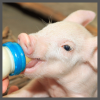
Under hyperprolific situations, piglets must deal with a reduced birthweight and a severe sibling competition for nutrients. Therefore, light body weight newborn and suckling piglets may also have physiological disadvantages compared to their middle-weight littermates.
Read more
-

Jun
23
Interpretive Summary: ASAS-NANP symposium: mathematical modeling in animal nutrition: limitations and potential next steps for modeling and modelers in the animal sciences

Modeling in the animal sciences has received a boost by large-scale adoption of sensor technology, increased computing power, and the further development of artificial intelligence (AI) in the form of machine learning (ML) and deep learning (DL) models.
Read more
-

Jun
23
Interpretive Summary: Genetic aspects of piglet survival and related traits: a review
.png?sfvrsn=488652d1_0)
Piglet survival is under genetic control and there are clear differences between individuals in their ability to live. Animals that do not survive their first weeks will obviously not reproduce as this is natural selection. Animals that survive still harbor relevant genetic differences.
Read more
-

Jun
23
Interpretive Summary: Review: Physiology and nutrition of late gestating and transition sows
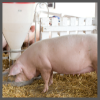
The transition period is a short period of the reproductive cycle spanning from 7–10 d prepartum to 3–5 d postpartum in sows. Nonetheless, it is highly important for the productivity of sows because it is when the majority of piglet deaths occur.
Read more
-

Jun
23
Interpretive Summary: Improving young pig welfare on-farm: The Five Domains Model

Considering welfare through the “neonatal and nursery pig perspective” is an exciting approach. Overlaying this with the Five Domains Model, as we suggest in this review, points to practical on-farm improvements that provide each pig the opportunity to experience positive mental states.
Read more
-

Jun
23
Interpretive Summary: Biological sex: an understudied factor driving disease susceptibility in pigs
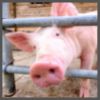
It has become increasingly evident that females and males differ in their susceptibility to disease and mortality. Females typically have higher survivability rates during pandemics and environmental challenges compared with males.
Read more
-

Jun
23
Interpretive Summary: Impact of housing environment and management on pre-/post-weaning piglet productivity
.png?sfvrsn=ad8652d1_0)
Achievement of pre-/post-weaning piglet success requires careful environmental management to ensure the thermal needs of the pigs are adequately met to reduce stress and promote livability, performance, and health.
Read more
-

Jun
23
Interpretive Summary: Gilt development to improve offspring performance and survivability
.png?sfvrsn=858652d1_0)
Proper gilt development influences offspring performance and survivability by increasing gilt longevity and colostrum and milk production. Gilt development success starts in selecting gilts heavier than 1 kg at birth, prioritizing colostrum and milk intake, and weaning at 24 d of age or older.
Read more
-

Jun
23
Interpretive Summary: Effects of administration of a growth promoting implant during the suckling phase or at weaning on growth, reproduction, and ovarian development in replacement heifers grazing native range
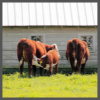
Management of beef females during the first year of life can impact fertility and reproductive longevity. Cattle producers can improve calf weight gains by using growth promoting implants; however, to be applicable, they must not negatively impact heifer reproductive performance or development.
Read more
 JunSenate Ag Committee Passes the Cattle Price Discovery and Transparency Act
JunSenate Ag Committee Passes the Cattle Price Discovery and Transparency Act.png?sfvrsn=829f52d1_0) The United States Senate Agricultural Committee has passed the Cattle Price Discovery and Transparency Act (S. 4030), a bill that would establish pricing mechanisms for live animal purchases.
The United States Senate Agricultural Committee has passed the Cattle Price Discovery and Transparency Act (S. 4030), a bill that would establish pricing mechanisms for live animal purchases. JunStudy finds plant-based protein not as nutritious as real meat
JunStudy finds plant-based protein not as nutritious as real meat A new study by researchers at Ohio State University found that human cells currently do not absorb the same level of nutrients from plant-based protein as they do from meat from animals. While plant-based proteins have risen in popularity, this study shines a light on how the body reacts differently when compared to meat.
A new study by researchers at Ohio State University found that human cells currently do not absorb the same level of nutrients from plant-based protein as they do from meat from animals. While plant-based proteins have risen in popularity, this study shines a light on how the body reacts differently when compared to meat. JunCall for nominations for the 2025 Dietary Guidelines Advisory Committee
JunCall for nominations for the 2025 Dietary Guidelines Advisory Committee The United States Department of Agriculture (USDA) and The United States Department of Health and Human Services (HHS) are calling for nominations for the 2025-2030 Dietary Guidelines Advisory Committee (DGAC). ASAS President-Elect Teresa Davis was a 2020-2025 member of the DGAC.
The United States Department of Agriculture (USDA) and The United States Department of Health and Human Services (HHS) are calling for nominations for the 2025-2030 Dietary Guidelines Advisory Committee (DGAC). ASAS President-Elect Teresa Davis was a 2020-2025 member of the DGAC. JunUSDA unveils the Food System Transformation framework
JunUSDA unveils the Food System Transformation framework The United States Department of Agriculture (USDA) has announced the details of the Food System Transformation framework. The framework was designed to transform the food system to benefit consumers, producers, and rural communities by providing more options, increasing access, and creating markets for small and mid-size producers.
The United States Department of Agriculture (USDA) has announced the details of the Food System Transformation framework. The framework was designed to transform the food system to benefit consumers, producers, and rural communities by providing more options, increasing access, and creating markets for small and mid-size producers. JunSupreme Court filings for California’s Proposition 12 underway
JunSupreme Court filings for California’s Proposition 12 underway The National Pork Producer’s Council (NPPC) and the American Farm Bureau Federation (AFBF) recently filed the initial brief with the United States Supreme Court in the case against California’s Proposition 12 (Prop 12). The Proposition bans the sale of pork not produced according to the state’s production standards.
The National Pork Producer’s Council (NPPC) and the American Farm Bureau Federation (AFBF) recently filed the initial brief with the United States Supreme Court in the case against California’s Proposition 12 (Prop 12). The Proposition bans the sale of pork not produced according to the state’s production standards. JunOperation Fly Formula created to help US families
JunOperation Fly Formula created to help US families Aimed to target the infant formula shortage, President Joe Biden has announced Operation Fly Formula. Under Operation Fly Formula, the United States Department of Agriculture (USDA) and the Department of Health and Human Services (HHS) are authorized to use Department of Defense (DOD)-contracted commercial aircraft to pick up overseas infant formula that meets U.S. health and safety standards, so it can get to store shelves faster.
Aimed to target the infant formula shortage, President Joe Biden has announced Operation Fly Formula. Under Operation Fly Formula, the United States Department of Agriculture (USDA) and the Department of Health and Human Services (HHS) are authorized to use Department of Defense (DOD)-contracted commercial aircraft to pick up overseas infant formula that meets U.S. health and safety standards, so it can get to store shelves faster. JunNew report finds the demand for meat outweighs meat avoidance
JunNew report finds the demand for meat outweighs meat avoidance Researchers from Kansas State University and Purdue University have released the report Meat demand outdoes meat avoidance. The report found that even with the increase in plant-based fake meat products, Americans are still consuming meat.
Researchers from Kansas State University and Purdue University have released the report Meat demand outdoes meat avoidance. The report found that even with the increase in plant-based fake meat products, Americans are still consuming meat. JunKansas’ fake meat law to go into effect July 1st
JunKansas’ fake meat law to go into effect July 1st A new law has been signed by the Governor of the state of Kansas to require producers of fake meat products that use meat terms to include a disclaimer indicating the product does not contain meat on the label in prominent and conspicuous font size in close proximity to the meat term.
A new law has been signed by the Governor of the state of Kansas to require producers of fake meat products that use meat terms to include a disclaimer indicating the product does not contain meat on the label in prominent and conspicuous font size in close proximity to the meat term. JunChavonda Jacobs Young confirmed as USDA REE Undersecretary
JunChavonda Jacobs Young confirmed as USDA REE Undersecretary Earlier this month, the United States Senate confirmed Dr. Chavonda Jacobs-Young to be the United States Department of Agriculture (USDA) undersecretary of agriculture for Research, Education, and Economics (REE).
Earlier this month, the United States Senate confirmed Dr. Chavonda Jacobs-Young to be the United States Department of Agriculture (USDA) undersecretary of agriculture for Research, Education, and Economics (REE). JunBiden Administration proposes changes to the Packers and Stockyards Act
JunBiden Administration proposes changes to the Packers and Stockyards Act The United States Department of Agriculture’s (USDA) Secretary Tom Vilsack announced additional support, resources, and rulings to strengthen the American food supply chain, promote fair and competitive agricultural markets, prevent abuse of farmers by poultry processors, and make prices fairer for farmers and American consumers.
The United States Department of Agriculture’s (USDA) Secretary Tom Vilsack announced additional support, resources, and rulings to strengthen the American food supply chain, promote fair and competitive agricultural markets, prevent abuse of farmers by poultry processors, and make prices fairer for farmers and American consumers. JunAmericans are changing their eating habits as inflation soars
JunAmericans are changing their eating habits as inflation soars As inflation soars, many Americans are changing the ways they shop and consume food. Currently, inflation is the highest it has been in over 40 years. Food-at-home prices have increased 11.9%, over the past year, up almost a point from May 2022, according to the United States Bureau of Labor Statistics.
As inflation soars, many Americans are changing the ways they shop and consume food. Currently, inflation is the highest it has been in over 40 years. Food-at-home prices have increased 11.9%, over the past year, up almost a point from May 2022, according to the United States Bureau of Labor Statistics. JunInterpretive Summary: Body weight of newborn and suckling piglets affects their intestinal gene expression
JunInterpretive Summary: Body weight of newborn and suckling piglets affects their intestinal gene expression Under hyperprolific situations, piglets must deal with a reduced birthweight and a severe sibling competition for nutrients. Therefore, light body weight newborn and suckling piglets may also have physiological disadvantages compared to their middle-weight littermates.
Under hyperprolific situations, piglets must deal with a reduced birthweight and a severe sibling competition for nutrients. Therefore, light body weight newborn and suckling piglets may also have physiological disadvantages compared to their middle-weight littermates. JunInterpretive Summary: ASAS-NANP symposium: mathematical modeling in animal nutrition: limitations and potential next steps for modeling and modelers in the animal sciences
JunInterpretive Summary: ASAS-NANP symposium: mathematical modeling in animal nutrition: limitations and potential next steps for modeling and modelers in the animal sciences Modeling in the animal sciences has received a boost by large-scale adoption of sensor technology, increased computing power, and the further development of artificial intelligence (AI) in the form of machine learning (ML) and deep learning (DL) models.
Modeling in the animal sciences has received a boost by large-scale adoption of sensor technology, increased computing power, and the further development of artificial intelligence (AI) in the form of machine learning (ML) and deep learning (DL) models. JunInterpretive Summary: Genetic aspects of piglet survival and related traits: a review
JunInterpretive Summary: Genetic aspects of piglet survival and related traits: a review.png?sfvrsn=488652d1_0) Piglet survival is under genetic control and there are clear differences between individuals in their ability to live. Animals that do not survive their first weeks will obviously not reproduce as this is natural selection. Animals that survive still harbor relevant genetic differences.
Piglet survival is under genetic control and there are clear differences between individuals in their ability to live. Animals that do not survive their first weeks will obviously not reproduce as this is natural selection. Animals that survive still harbor relevant genetic differences. JunInterpretive Summary: Review: Physiology and nutrition of late gestating and transition sows
JunInterpretive Summary: Review: Physiology and nutrition of late gestating and transition sows The transition period is a short period of the reproductive cycle spanning from 7–10 d prepartum to 3–5 d postpartum in sows. Nonetheless, it is highly important for the productivity of sows because it is when the majority of piglet deaths occur.
The transition period is a short period of the reproductive cycle spanning from 7–10 d prepartum to 3–5 d postpartum in sows. Nonetheless, it is highly important for the productivity of sows because it is when the majority of piglet deaths occur. JunInterpretive Summary: Improving young pig welfare on-farm: The Five Domains Model
JunInterpretive Summary: Improving young pig welfare on-farm: The Five Domains Model Considering welfare through the “neonatal and nursery pig perspective” is an exciting approach. Overlaying this with the Five Domains Model, as we suggest in this review, points to practical on-farm improvements that provide each pig the opportunity to experience positive mental states.
Considering welfare through the “neonatal and nursery pig perspective” is an exciting approach. Overlaying this with the Five Domains Model, as we suggest in this review, points to practical on-farm improvements that provide each pig the opportunity to experience positive mental states. JunInterpretive Summary: Biological sex: an understudied factor driving disease susceptibility in pigs
JunInterpretive Summary: Biological sex: an understudied factor driving disease susceptibility in pigs It has become increasingly evident that females and males differ in their susceptibility to disease and mortality. Females typically have higher survivability rates during pandemics and environmental challenges compared with males.
It has become increasingly evident that females and males differ in their susceptibility to disease and mortality. Females typically have higher survivability rates during pandemics and environmental challenges compared with males. JunInterpretive Summary: Impact of housing environment and management on pre-/post-weaning piglet productivity
JunInterpretive Summary: Impact of housing environment and management on pre-/post-weaning piglet productivity.png?sfvrsn=ad8652d1_0) Achievement of pre-/post-weaning piglet success requires careful environmental management to ensure the thermal needs of the pigs are adequately met to reduce stress and promote livability, performance, and health.
Achievement of pre-/post-weaning piglet success requires careful environmental management to ensure the thermal needs of the pigs are adequately met to reduce stress and promote livability, performance, and health. JunInterpretive Summary: Gilt development to improve offspring performance and survivability
JunInterpretive Summary: Gilt development to improve offspring performance and survivability.png?sfvrsn=858652d1_0) Proper gilt development influences offspring performance and survivability by increasing gilt longevity and colostrum and milk production. Gilt development success starts in selecting gilts heavier than 1 kg at birth, prioritizing colostrum and milk intake, and weaning at 24 d of age or older.
Proper gilt development influences offspring performance and survivability by increasing gilt longevity and colostrum and milk production. Gilt development success starts in selecting gilts heavier than 1 kg at birth, prioritizing colostrum and milk intake, and weaning at 24 d of age or older. JunInterpretive Summary: Effects of administration of a growth promoting implant during the suckling phase or at weaning on growth, reproduction, and ovarian development in replacement heifers grazing native range
JunInterpretive Summary: Effects of administration of a growth promoting implant during the suckling phase or at weaning on growth, reproduction, and ovarian development in replacement heifers grazing native range Management of beef females during the first year of life can impact fertility and reproductive longevity. Cattle producers can improve calf weight gains by using growth promoting implants; however, to be applicable, they must not negatively impact heifer reproductive performance or development.
Management of beef females during the first year of life can impact fertility and reproductive longevity. Cattle producers can improve calf weight gains by using growth promoting implants; however, to be applicable, they must not negatively impact heifer reproductive performance or development.



